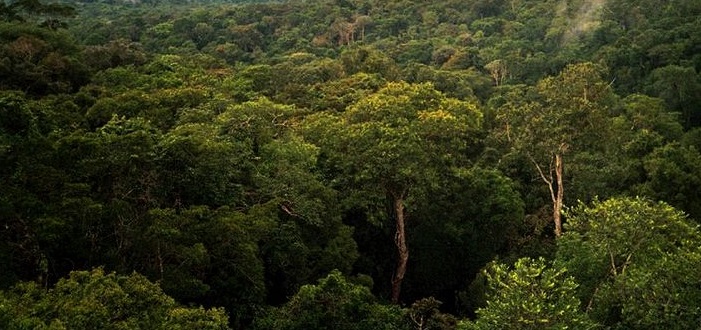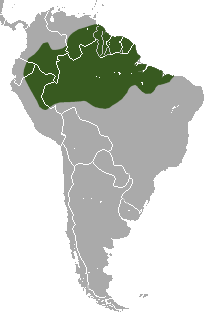
Habitat
 Linnaeus’s two toed sloth (Choloepus didactylus)
lives exclusively in warm, moist environments, including portions of the
following countries: Peru (which also is home to the
cocoa plant), Ecuador, Brazil, Columbia, and Venezuela. The rainforests and
tropical deciduous forests of South America are particularly well
equipped to be the sloth’s home. With elevations below 2,438 meters and
an abundance of trees, everything that the sloths need to survive is
provided (Adam, 1999). The vegetation of the area is primarily grasses
and open rainforest and the land itself is mostly flat and is exposed to
flooding on a seasonal basis. April begins the rainy season, which lasts
until August, and the mean annual precipitation is 1750 mm. September
begins the dry season, which lasts until March. 32°C is the normal
yearly temperature (Delibes et al., 2011).
Linnaeus’s two toed sloth (Choloepus didactylus)
lives exclusively in warm, moist environments, including portions of the
following countries: Peru (which also is home to the
cocoa plant), Ecuador, Brazil, Columbia, and Venezuela. The rainforests and
tropical deciduous forests of South America are particularly well
equipped to be the sloth’s home. With elevations below 2,438 meters and
an abundance of trees, everything that the sloths need to survive is
provided (Adam, 1999). The vegetation of the area is primarily grasses
and open rainforest and the land itself is mostly flat and is exposed to
flooding on a seasonal basis. April begins the rainy season, which lasts
until August, and the mean annual precipitation is 1750 mm. September
begins the dry season, which lasts until March. 32°C is the normal
yearly temperature (Delibes et al., 2011).
The diet of Choloepus didactylus is mostly still unknown due to their
nocturnal feeding habits, but it is hypothesized that they mostly eat
the vegetation found on tropical trees, particularly the leaves,
berries, fruits and small, manageable pieces of twigs (Felton- Church,
2000; Adam, 1999). The sloths spend
the majority of their lives hanging on the tree branches in the
environment. Choloepus didactylus prefers dense areas of the forests
abundant in vines and tree crowns connecting one tree to the next,
providing them a means of moving between trees above the ground (Adam,
1999).
Linnaeus’s two-toed sloths share the habitat with other animals adapted
exclusively for the tropical and deciduous rainforests, including a
variety of snakes,
monkeys,
bats,
anteaters, tree frogs, and
toucans. The territory of
Linnaeus’s sloths is also shared with Bradypus variegatuss. This results in competition for food, since all of the species
share a similar diet (Adam, 1999). The sloths also share their home with
jaguars, pumas,
ocelots, marguays, and harpy eagles, which are the
primary predators of Choloepus didactylus (Adam, 1999; Delibes
et al., 2011).
The habitat of Linnaeus’s two toed sloth is steadily decreasing due to
the deforestation of the South American rainforests to clear room for
farming, residential areas, and ranching. Such loss of land inhabited by
native species causes a drastic reduction in the biodiversity of the
ecosystem (Peery & Pauli, 2014). Due to Linnaeus’s sloth’s sessile
lifestyle, they have a very low metabolism, which prevents them from
having a quick and efficient dispersal ability when compared to the
other species that share the same environments. This, combined with the
sloth’s need to live in forested areas, causes the sloths to be more
susceptible to deforestation of the landscape (Peery & Pauli, 2014).
However, Choloepus didactylus has experienced the least amount of
relocation and habitat loss of the other South American sloths,
including Choloepus hoffmanni (Moreno & Plese, 2006).
Recent endeavors to restore the South American
sloths’ natural habitat includes planting shade-grown cacao plants. The
goal is that such ‘agro-ecosystems’ will increase the biodiversity of such neotropical
environments, thus increasing the population birth rate and the survival
rate of the sloths (Peery & Pauli, 2014).